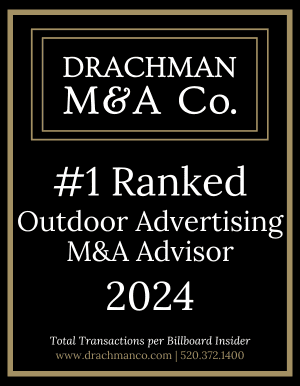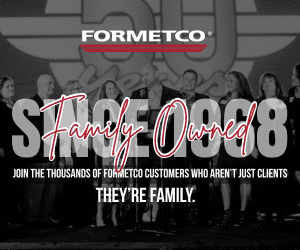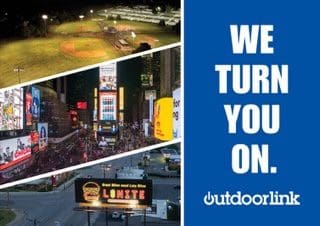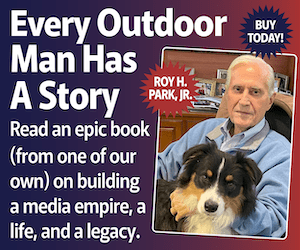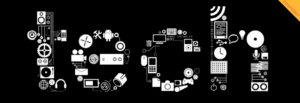
By Nicole Randall OAAA Communications Director
This month, OAAA spotlights the Innovations Committee, asking members, “If you could snap your fingers to change one technology-related thing in the OOH industry, what would you change today and why?”

Kevin Bartanian, EVP Sales & Business Development, StandardVision
I would have all creative for DOOH be adaptive and reactive. Cultural relevance has always been a driving factor in ad efficacy. Being very effective today in OOH requires advertisers to think about micro-moments and incorporate those moments in DOOH – as they happen, in real time. For example, when the lights went out at the 2013 Super Bowl, people took to social media and discussed the blackout, and when Oreo posted a funny tweet about the event, it generated a lot of buzz.
 Ian Dallimore, Director of Digital Innovation + Sales Strategy, Lamar Advertising Company
Ian Dallimore, Director of Digital Innovation + Sales Strategy, Lamar Advertising Company
I would say data. This is finally allowing the OOH industry to become a larger part of conversations with brands. We are now able to be a part of buys in the past we weren’t considered. Snapping the fingers would more relate to not only getting the industry up to speed and educated but also brands and agencies; that is historically the thing that takes the longest. I’d also say data from the creative side, as well. We have put such an emphasis on data to plan and measure but not enough on creative. If a brand uses data to strategically purchase OOH then plays generic creative, the entire plan is pointless. We must do a better job of blending arts and science in OOH and hold brands and agencies responsible.
 Mikhail Damiani, CEO & Co-Founder, Blue Bite
Mikhail Damiani, CEO & Co-Founder, Blue Bite
More public APIs (application programming interfaces), which would allow for quicker and better integration with external systems and apps. This would make it easier to trigger dynamic content on OOH screens (when they are digital), but even more importantly would allow external apps/sites and content that people are consuming to leverage the data from OOH to provide an experience that is somehow relevant and connected to what is displayed on the OOH media.
 Mike Gamaroff, SVP of Channel Strategy, SITO Mobile
Mike Gamaroff, SVP of Channel Strategy, SITO Mobile
We all know the various challenges in replacing static with digital. Companies have to choose carefully which ones they convert based on a variety of factors. If everything was digital, it would enable fully automated and smart targeting, reduce costs, and make for an OOH industry that is at last fully comparable to online.
 Jeff Gunderman, President, EYE Corp Media
Jeff Gunderman, President, EYE Corp Media
I would improve the ability to automate the buying of OOH and better enable the buying of audiences, as opposed to boards. Even with great strides toward measurement and programmatic buying, we continue to be well behind other media types, many of which are growing at double digits.
Stephanie Gutnik, Vice President of Business Development, BroadSign
 Patience is not one of my virtues. As such, I would not change a technology but expedite its adoption. Programmatic DOOH workflows were made feasible relatively recently and facilitate easier demand-side access to the channel. It takes time to educate brands and agencies about the benefits of our medium – but it would be wonderful to see the medium’s spend grow at an astonishing, unprecedented rate.
Patience is not one of my virtues. As such, I would not change a technology but expedite its adoption. Programmatic DOOH workflows were made feasible relatively recently and facilitate easier demand-side access to the channel. It takes time to educate brands and agencies about the benefits of our medium – but it would be wonderful to see the medium’s spend grow at an astonishing, unprecedented rate.
Dan Levi, Chief Marketing Officer, Clear Channel Outdoor
 I would apply my genie powers to create one unified online system that allows for all advertisers, agencies, and media owners to easily plan, buy, and sell OOH advertising based on the value of the audiences reached. This magical system would allow advertisers and agencies to leverage a consistent platform and data set to understand how OOH adds reach, impact, and efficiency to cross-media plans, while providing a standardized and friction-free platform through which ads can be purchased in near-real time across all media owners and OOH display types.
I would apply my genie powers to create one unified online system that allows for all advertisers, agencies, and media owners to easily plan, buy, and sell OOH advertising based on the value of the audiences reached. This magical system would allow advertisers and agencies to leverage a consistent platform and data set to understand how OOH adds reach, impact, and efficiency to cross-media plans, while providing a standardized and friction-free platform through which ads can be purchased in near-real time across all media owners and OOH display types.
Of course, the whole finger-snapping magic thing has never really worked for me, and the reality is that each advertiser and agency will always bring their own unique approach to how they target audiences and the role that OOH plays in their media and marketing plans. So, it’s incumbent upon media owners to understand each customer and agency partner’s unique business challenges and approach; use a consistent measurement currency to ensure comparability of OOH audiences across media owners; and continue to invest in innovative solutions, data-driven insights and system enhancements that unlock the value of our audiences while making OOH easier to buy.
That is, until someone figures out how to make the finger-snapping thing work…
 Peter MacDonald, COO, MacDonald Media
Peter MacDonald, COO, MacDonald Media
If I could snap my fingers and have one thing change, it would be access to data. Whether it be audiences, measurement, location data, device IDs, pricing, or even unit availability, I’d love to have a more streamlined way to get it, ingest it, and evaluate it.
Maybe not as cool as some other technologies, but definitely just as important to the growth of the OOH industry.
 Mike Norton, EVP, Norton Outdoor Advertising
Mike Norton, EVP, Norton Outdoor Advertising
Although I’m not sure it’s technology-related, having agreed upon standards of information required (including in what order of columns) for proposals and POP’s would make our industry much more efficient and easier to plan and buy. As it stands, each agency has slightly different requirements, so there is too much time spent adjusting and reformatting spreadsheets. If there was a standardized spreadsheet format, then the scheduling software that each company uses could be changed to output to those standards for both proposals and proof of performance. This standardization would also help nudge us in the direction of automated/programmatic buying/selling, or at least make us more prepared to do so.
 Ben Putland, Chief Operating Officer, Grand Visual
Ben Putland, Chief Operating Officer, Grand Visual
One of the major challenges for improving creativity across the digital OOH media landscape has been the diversity of formats and the lack of standardization. Fast, siloed growth, driven by separate media owners, across a range of urban spaces, has resulted in a myriad of formats, shapes and sizes, spot lengths and file specifications to create for. This makes creative fulfilment for large scale campaigns that span multiple networks and markets difficult and costly.
So if I could snap my fingers and change one technology-related issue, it would be to address the sheer range of technologies and the lack of cohesive industry standards. Standardisation becomes even more pressing as we move towards a programmatically informed future for the medium. Where global rollouts start to become the new norm. But these growing pains have become our craft. Just like other mediums, digital OOH required the infrastructure, strategies, systemised workflow and creative toolkits to face the future. Digital technology is opening up new avenues for flexible creativity and it will be exciting to see where these developments take us in 2018.
 Ray Rotolo, SVP GM Channel Partnerships, Gimbal
Ray Rotolo, SVP GM Channel Partnerships, Gimbal
I would make sure everyone understood the difference of how location data is acquired and what it all means. There is a big difference in data acquired via first party means (SDK, etc) vs. data acquired via the bidstream. When a company says “we scrub our data to clean it up” take notice, if it was acquired via true first-party means they wouldn’t have to scrub it in the first place. Understand where your data is coming from, ask the questions. Your targeting will be cleaner and crisper and your clients will notice.
 Andy Sriubas, Chief Commercial Officer, OUTFRONT Media
Andy Sriubas, Chief Commercial Officer, OUTFRONT Media
In a word, automation. While data, metrics, digital displays, embedded Twitter feeds, dynamic content, and POP are all needed in OOH, automating the buying process is fundamental to our success. The productivity that any industry obtains through automated toolsets, becomes exponential after starting with basic digital buying processes. We need to open the aperture to more buyers and make it easy for all clients to give us their orders. Why put hurdles in their way?
[wpforms id=”9787″]
Paid Advertisement
